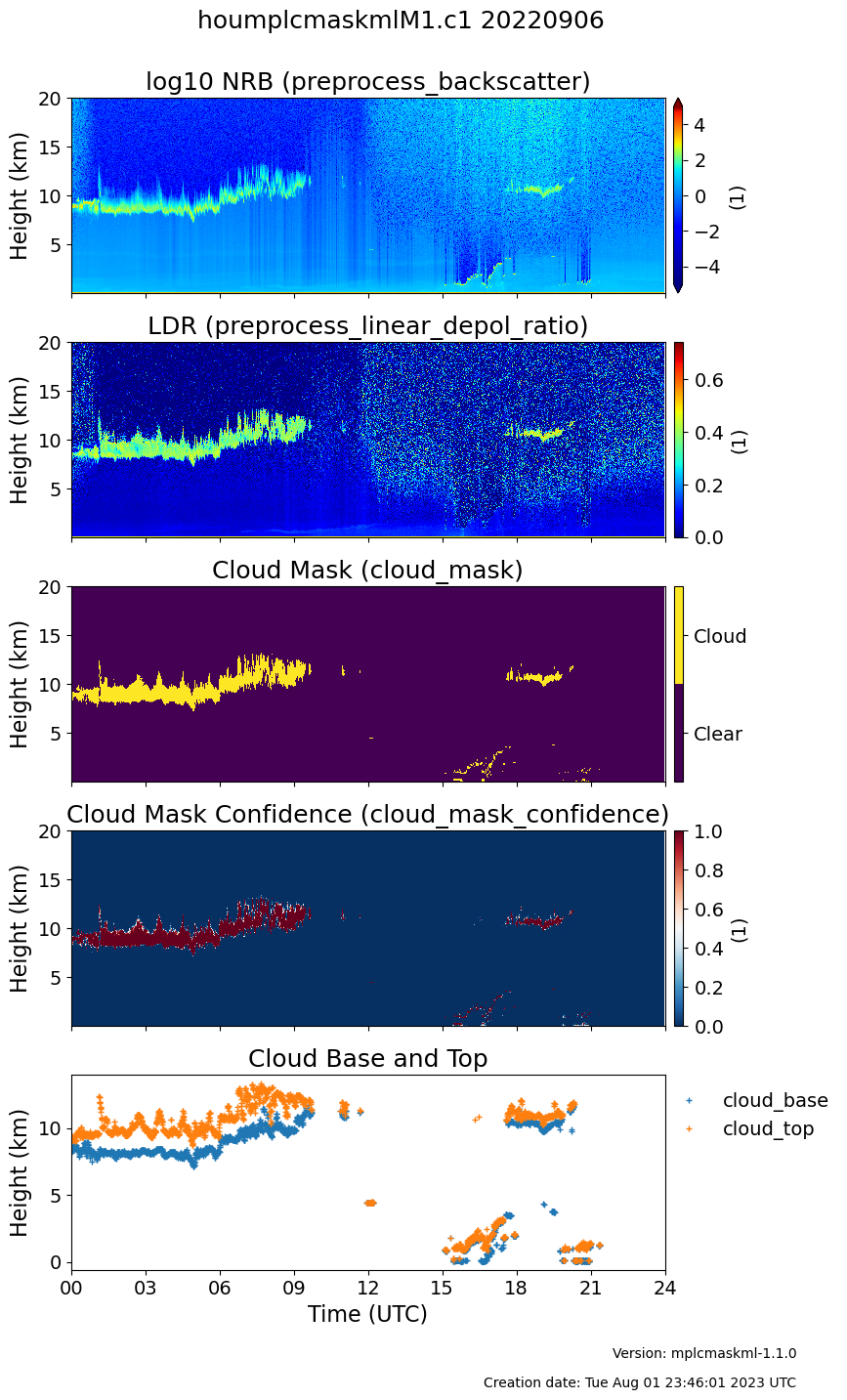Micropulse Lidar Cloud Mask Machine Learning VAP Released for 2 ARM Campaigns
Published: 21 February 2024

The Micropulse Lidar Cloud Mask Machine Learning value-added product (MPLCMASKML VAP) is now available for two recent field campaigns conducted by the Atmospheric Radiation Measurement (ARM) user facility.
Users can now access MPLCMASKML production data from the ARM Mobile Facility site that operated in La Porte, Texas, during the TRacking Aerosol Convection interactions ExpeRiment (TRACER). The TRACER campaign data are available from October 1, 2021, to September 29, 2022.
In addition, MPLCMASKML production data are available from both ARM sites that operated during the Cold-Air Outbreaks in the Marine Boundary Layer Experiment (COMBLE) in northern Norway. The COMBLE data cover the ARM Mobile Facility site near Andenes from February 13 to June 1, 2020, and the supplementary site on Bear Island from January 3 to June 1, 2020.
MPLCMASKML uses a machine learning model that can produce pixel-to-pixel predictions of clouds in lidar images (Cromwell and Flynn 2019). The VAP gives users the predictions from the model, the cloud mask generated from the prediction output, the number of cloud layers, and the cloud layer boundaries.
More information about MPLCMASKML is available on the VAP web page.
Access the COMBLE and TRACER data in the ARM Data Center. (To download the data, first create an ARM account.) The data are available as daily netCDF files.
Future MPLCMASKML data will come from the 2021–2023 Surface Atmosphere Integrated Field Laboratory (SAIL) campaign near Crested Butte, Colorado.
To share your experience using the new data or to ask questions, contact ARM translator Damao Zhang, assistant translator Donna Flynn, or VAP developer Erol Cromwell.
To cite the MPLCMASKML data, please use doi:10.5439/1637940.
Reference: Cromwell E and D Flynn. 2019. “Lidar Cloud Detection With Fully Convolutional Networks.” In 2019 IEEE Winter Conference on Applications of Computer Vision (WACV), 619-627, doi:10.1109/WACV.2019.00071.
Keep up with the Atmospheric Observer
Updates on ARM news, events, and opportunities delivered to your inbox
ARM User Profile
ARM welcomes users from all institutions and nations. A free ARM user account is needed to access ARM data.


















